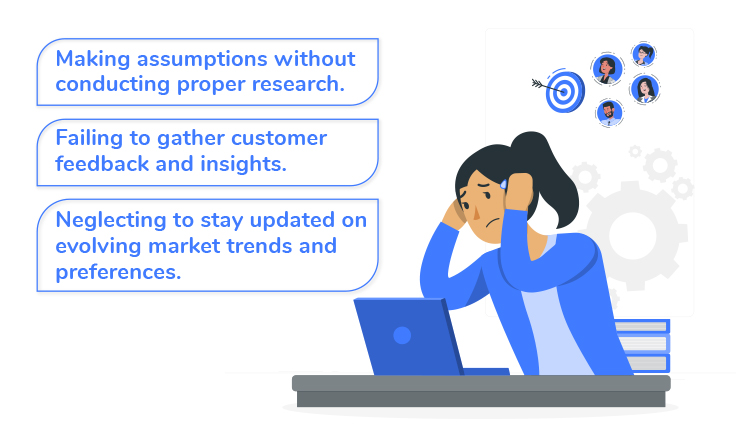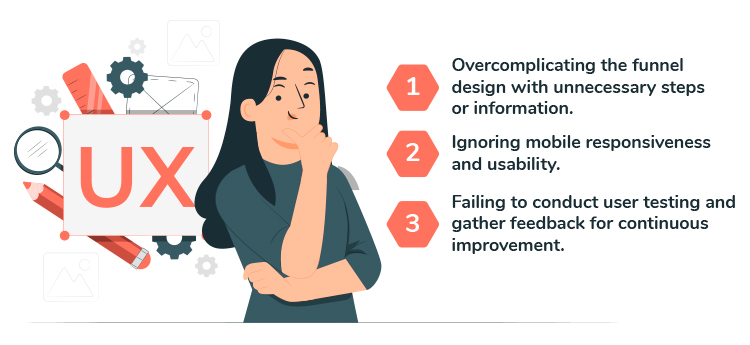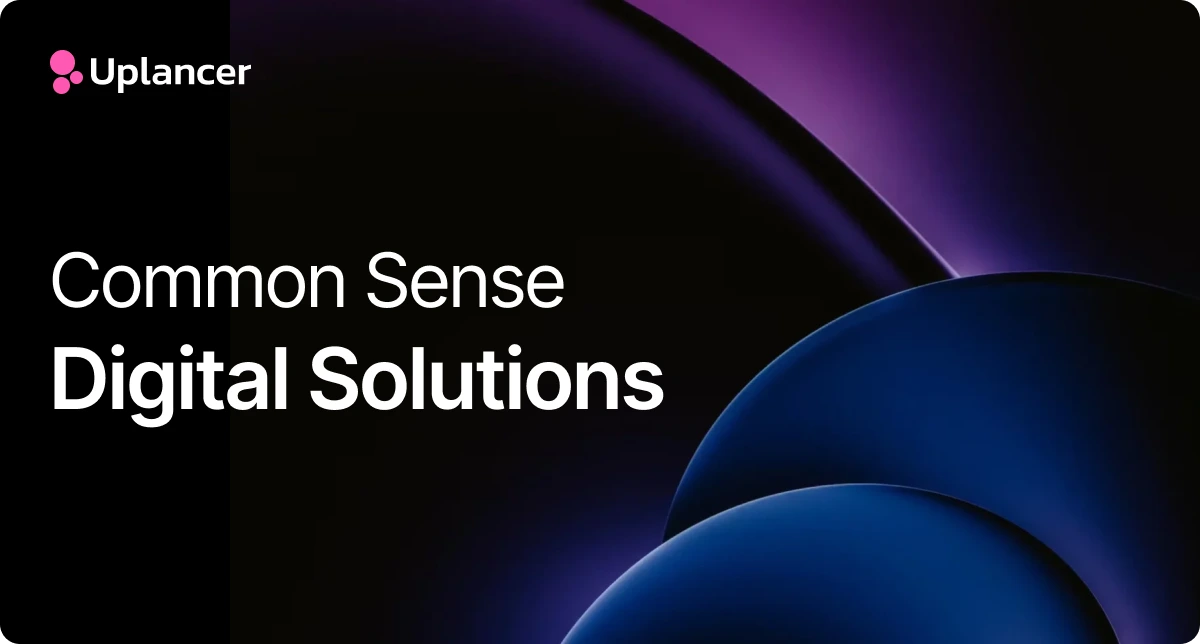Common Mistakes to Avoid When Choosing a Sales Funnel for Your Business

Choosing the right sales funnel is paramount for achieving business success. It can make or break your customer acquisition and conversion efforts.
Let’s explore the common mistakes entrepreneurs and marketers often make when selecting a sales funnel for their business. By understanding and avoiding these pitfalls, you can optimise your sales process and drive better results.
Lack of Understanding about Target Audience:
Before choosing a sales funnel, it is essential to have a clear understanding of your target audience. Identify their demographics, pain points, preferences, and behaviours. This information helps tailor your sales funnel to effectively engage and convert your ideal customers.
Identifying target audience needs and preferences:
Researching your target audience’s needs and preferences enables you to create a sales funnel that addresses their specific pain points and provides valuable solutions. By aligning your funnel with their expectations, you can enhance customer satisfaction and increase conversions.
Common mistakes in researching the target audience:

- Making assumptions without conducting proper research.
- Failing to gather customer feedback and insights.
- Neglecting to stay updated on evolving market trends and preferences.
Neglecting to Analyze Business Goals:
Before selecting a sales funnel, establish clear goals and objectives for your business. Are you focused on lead generation, increasing sales, or expanding customer retention? Having well-defined goals enables you to align your funnel strategy with your desired outcomes.
Aligning the sales funnel with goals and objectives:
Once your goals are in place, ensure that your sales funnel aligns with them. Each stage of the funnel should support your business objectives and move prospects closer to conversion. A cohesive alignment enhances efficiency and drives better results.
Addressing common errors in setting business goals:

- Setting unrealistic goals without considering market conditions or available resources.
- Failing to track and measure progress towards goals.
- Overlooking the need for flexibility and adaptation as circumstances change.
Overlooking the Importance of Customer Journey Mapping:
Customer journey mapping involves visualising the entire customer experience, from initial awareness to post-purchase interactions. Understanding this journey helps you identify touch points where potential customers may drop off and optimise your funnel accordingly.
How customer journey mapping influences sales funnel selection:
By mapping the customer journey, you can identify gaps, friction points, and areas for improvement in your sales funnel. This enables you to create a seamless, personalised experience that guides customers smoothly through each stage, maximising conversions.
Discussing typical oversights when mapping the customer journey:

- Neglecting to include multiple customer personas and their unique journeys.
- Failing to consider various channels and touchpoints where customers interact with your brand.
- Not revisiting and updating the customer journey map as market dynamics change.
Failing to Leverage Analytics and Data:
Data-driven insights are invaluable for optimising your sales funnel. Leverage analytics tools to gather quantitative and qualitative data, such as conversion rates, customer behaviour, and feedback. This data empowers you to make informed decisions and fine-tune your funnel for better results.
Identifying key metrics and KPIs to measure sales funnel performance:
Establish key performance indicators (KPIs) that align with your sales funnel objectives. These metrics could include conversion rates, customer acquisition costs, average order value, or customer lifetime value. Regularly monitor and analyse these metrics to track funnel performance and identify areas for improvement.
Highlighting common mistakes when collecting and interpreting data:

- Overlooking the importance of data accuracy and quality.
- Focusing solely on vanity metrics without considering deeper insights.
- Failing to take timely action based on data-driven findings.
Disregarding the Role of User Experience:
A positive user experience is crucial for driving conversions. Ensure your sales funnel provides a seamless journey that is intuitive, visually appealing, and optimised for different devices. Make it easy for customers to navigate, find information, and complete their desired actions.
Incorporating user-friendly design and navigation:
Simplify your funnel’s design and navigation to minimise confusion and friction. Use clear call-to-action buttons, intuitive forms, and intuitive progress indicators. A clutter-free and user-friendly interface enhances engagement and increases the likelihood of conversion.
Discussing pitfalls related to neglecting user experience:

- Overcomplicating the funnel design with unnecessary steps or information.
- Ignoring mobile responsiveness and usability.
- Failing to conduct user testing and gather feedback for continuous improvement.
Ignoring the Importance of Testing and Iteration:
Regularly test different elements of your sales funnel to identify what works best for your target audience. A/B testing allows you to compare variations and make data-driven decisions for optimization. Continual iteration ensures your funnel remains effective and aligned with evolving customer needs.
Implementing A/B testing and gathering user feedback:
Conduct A/B tests on various elements such as landing pages, call-to-action buttons, copy, or email subject lines. Collect feedback from users through surveys, user testing sessions, or customer interviews. These insights provide valuable input for refining your sales funnel.
Exploring common errors in testing and iteration processes:

- Testing too many variables simultaneously, making it challenging to pinpoint what drives improvements.
- Ignoring statistical significance when analysing test results.
- Neglecting to document and track changes made during the iteration process.
Overcomplicating the Sales Funnel:
Simplicity is key when designing your sales funnel. Remove unnecessary steps or information that may confuse or overwhelm potential customers. A streamlined funnel ensures a clear path to conversion and minimises drop-offs along the way.
Avoiding unnecessary complexity and potential customer confusion:
Keep your sales funnel straightforward and easy to follow. Clearly communicate the value proposition and benefits at each stage. Avoid excessive form fields or intrusive requests for information that may deter potential customers.
Common mistakes when designing a sales funnel:
- Trying to include too much information or upselling too early in the funnel.
- Overloading prospects with too many choices or options.
- Neglecting to test and optimise the funnel for a simplified user experience.
Conclusion:
Choosing the right sales funnel for your business requires careful consideration and strategic planning. By avoiding these common mistakes, such as lacking understanding about the target audience, neglecting to analyse business goals, overlooking customer journey mapping, failing to leverage analytics and data, disregarding user experience, ignoring testing and iteration, and overcomplicating the funnel, you can set yourself up for success.
Remember to continuously assess and refine your sales funnel based on data-driven insights and customer feedback. By taking a strategic approach, aligning with your business goals, and providing a seamless user experience, you can maximise your sales funnel’s effectiveness and drive meaningful results for your business.












